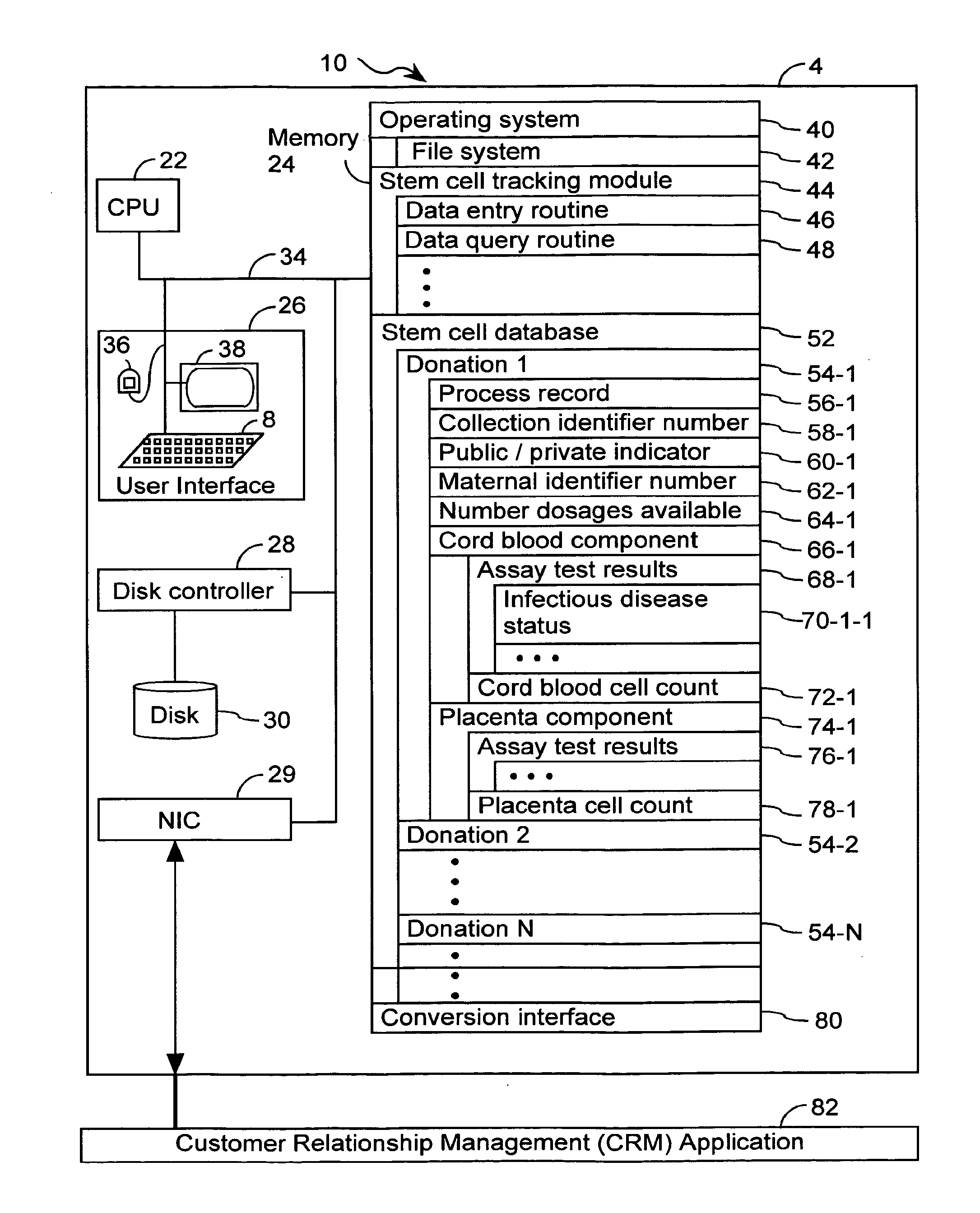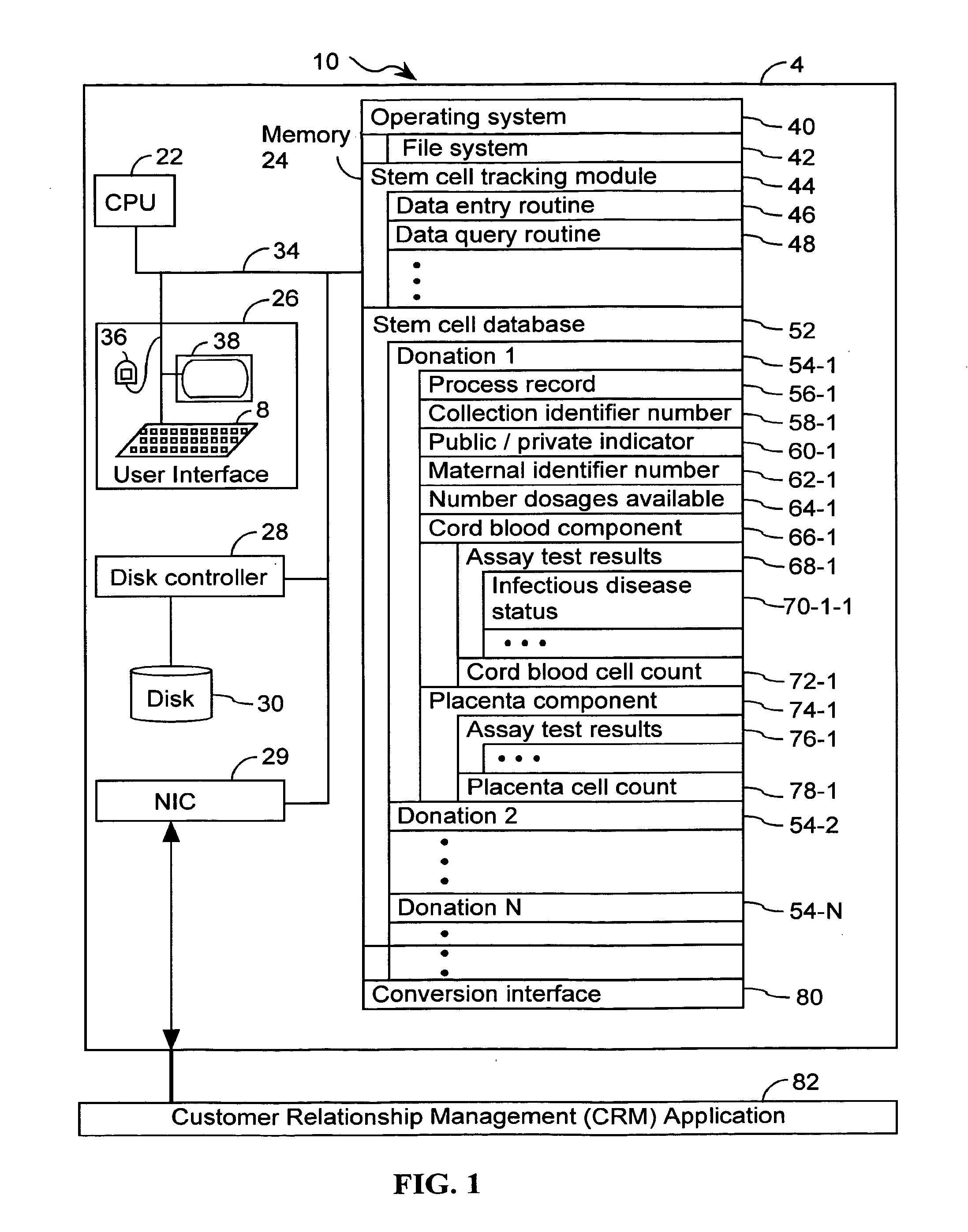Systems and methods for providing a stem cell bank
a technology of stem cells and systems, applied in the field of systems and methods for providing stem cells, can solve the problems of a large number of serious side-effects, a large number of patients' sibling's potential match, and the search process can take 3-6 months, and achieve the effect of reducing the risk of death, reducing the number of patients' chances of being suitable matches, and improving the quality of li
- Summary
- Abstract
- Description
- Claims
- Application Information
AI Technical Summary
Benefits of technology
Problems solved by technology
Method used
Image
Examples
example 1
6.1. Example 1
Analysis of Cells Obtained by Perfusion and Incubation of Placenta
[0163]The following example describes an analysis of cells that can be obtained by perfusion and incubation of placenta according to the methods of the invention.
6.1.1 Materials and Methods
[0164]Placenta donors can be recruited from expectant mothers that enrolled in umbilical cord blood banking programs and provided informed consent permitting the use of the exsanguinated placenta following recovery of cord blood for research purposes. Donor data may be confidential. These donors can also be permitted to use of blinded data generated from the normal processing of their umbilical cord blood specimens for cryopreservation. This allows comparison between the composition of the collected cord blood and the effluent perfusate recovered using the experimental method described below.
[0165]Following exsanguination of cord blood from the umbilical cord and placenta, the placenta is stored at room temperature and...
example 2
6.2. Example 2
Exemplary System
[0175]Referring to FIG. 7, there is shown an exemplary system 700 in accordance with one embodiment of the present invention. Exemplary system 700 includes a one or more user terminals 38, scanners 702, printers 704, and bar code printers 706 that are interfaced with a terminal server pool 708. Terminal server pool 708 hosts and / or is in electronic communication with CRM application 244 and LIMS application 44. In some embodiments, CRM application 244 and LIMS application 44 are hosted by different servers. In the embodiment illustrated in FIG. 7, donor anonymity is preserved between CRM application 244 and LIMS application 44 through interface 716. Interface allows for the exchange of certain information between CRM application 244 and LIMS application 44 and the exchange of certain information between CRM database 250 and LIMS database. In some embodiments, interface 716 passes the information listed in Table 1 below from LIMS application 44 to CRM ap...
PUM
| Property | Measurement | Unit |
|---|---|---|
| time | aaaaa | aaaaa |
| time | aaaaa | aaaaa |
| time | aaaaa | aaaaa |
Abstract
Description
Claims
Application Information
 Login to View More
Login to View More - R&D
- Intellectual Property
- Life Sciences
- Materials
- Tech Scout
- Unparalleled Data Quality
- Higher Quality Content
- 60% Fewer Hallucinations
Browse by: Latest US Patents, China's latest patents, Technical Efficacy Thesaurus, Application Domain, Technology Topic, Popular Technical Reports.
© 2025 PatSnap. All rights reserved.Legal|Privacy policy|Modern Slavery Act Transparency Statement|Sitemap|About US| Contact US: help@patsnap.com



